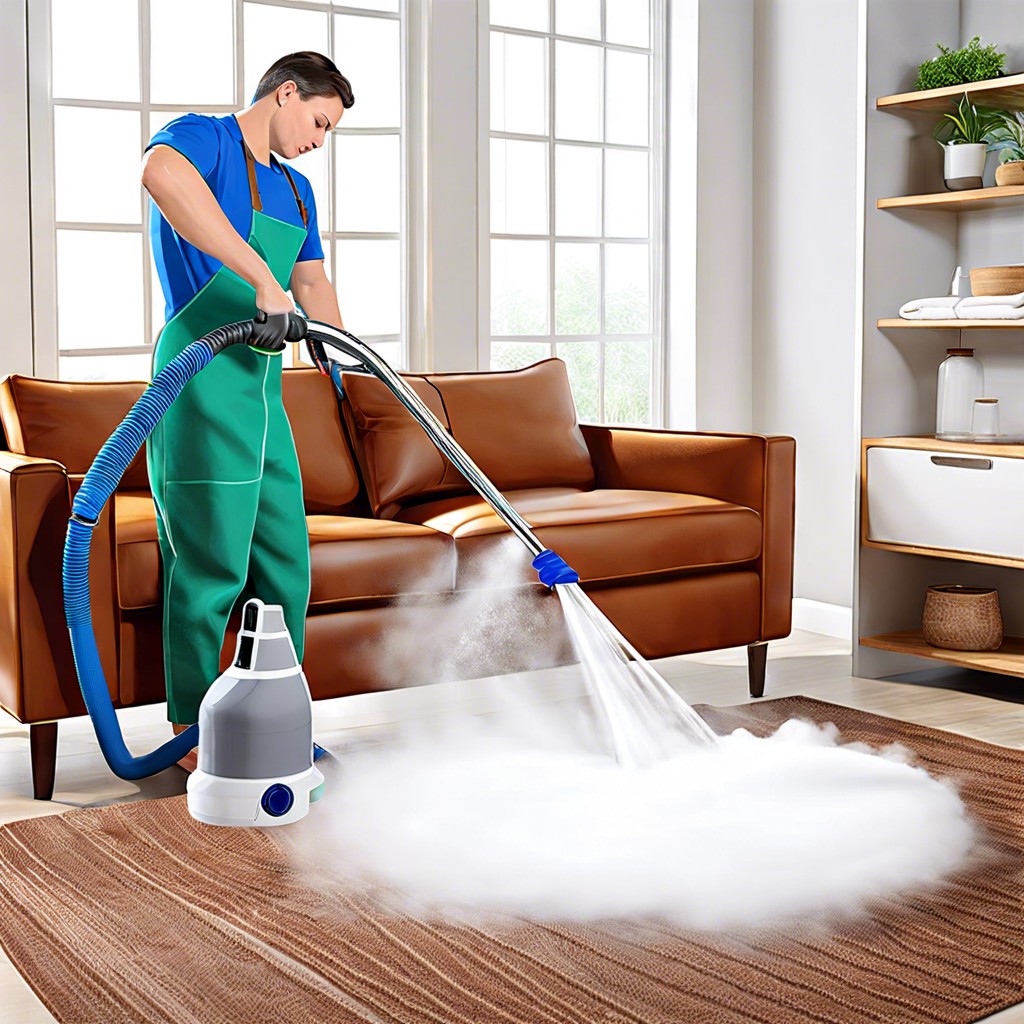Last updated on
Discover effective strategies to identify and get rid of bed bugs that have taken up residence in your couch.
Key takeaways:
- Small, Rust-Colored Stains indicate a bedbug infestation
- Look for Tiny, White Eggs and Shed Skins
- Adult bedbugs are the size of apple seeds, juveniles are smaller
- Unexplained Bites could indicate bedbugs, plus musty odor
- Vacuum, steam clean, use bed bug spray, encase in plastic, and use diatomaceous earth
Table of Contents
Signs of a Bedbug Infestation
Identifying a bedbug infestation early can save you a considerable amount of time and effort. Look for the following signs:
- Small, Rust-Colored Stains: Bedbugs can leave behind tiny bloodstains from their feeding or darker fecal spots. Examine your couch, especially seams and crevices, for these telltale signs.
- Tiny, White Eggs: Roughly the size of a pinhead, these eggs are often tucked away in hidden areas of the couch.
- Shed Skins: As they grow, bedbugs molt multiple times, leaving behind small, translucent exoskeletons.
- Live Bugs: Adult bedbugs resemble apple seeds in size and shape, and juveniles are smaller and lighter in color.
- Unexplained Bites: Waking up with itchy bites in a line or cluster could indicate the presence of bedbugs. Though not exclusive to bedbugs, this sign should not be ignored.
- Musty Odor: An unmistakable sweet, musty scent is sometimes noticeable in severe infestations due to bedbug pheromones.
Sightings or evidence should prompt immediate action to prevent further spread.
How to Tell If a Couch Has Bed Bugs
Identifying a bed bug presence in your couch involves vigilance and attention to detail. Look for small, reddish-brown insects that are approximately the size of an apple seed. Another telltale sign is the appearance of tiny, dark spots on the upholstery, which can be bed bug excrement. You might also spot small, pale yellow skins that nymphs shed as they grow.
Additionally, check for blood spots, which may occur when bed bugs are crushed accidentally. Don’t forget to inspect crevices, seams, and folds in the fabric, as bed bugs prefer to hide in tight spaces during the day. If there’s a sweet, musty odor emanating from your couch, it might be the pheromones released by a large bed bug infestation. Use a flashlight and a magnifying glass if necessary to get a closer look during your inspection.
Steps for Getting Rid of Bed Bugs Hiding On Your Couch
Vacuum the couch thoroughly, using a high-powered vacuum with a hose attachment to reach into crevices, seams, and folds. Discard the vacuum bag or contents in a sealed plastic bag immediately after use.
Steam clean the couch with a high-heat steamer, ensuring the steam reaches at least 118°F (48°C), as bed bugs and their eggs are killed at this temperature.
Apply a bed bug spray specifically designed for furniture, adhering to the manufacturer’s instructions for application and safety procedures. Make sure to choose a product that’s appropriate for use on fabrics and furniture surfaces.
Encase the couch in a large, heavy-duty plastic furniture cover, sealing it tightly for several weeks to suffocate remaining bed bugs.
Consider using diatomaceous earth, a natural powder that can be sprinkled in and around the couch. It works by dehydrating the bed bugs that come into contact with it.
Regularly inspect the couch for signs of ongoing activity, as multiple treatments over a period of time may be necessary to fully eradicate the infestation.
Should You Just Throw Out Your Bed Bug Infested Furniture?
Discarding bed bug-infested furniture can seem like the simplest solution to a troubling infestation. However, this action may not be as effective as it appears for several reasons:
- Potential Spread: Moving contaminated furniture can disperse bed bugs throughout the home or building, exacerbating the problem.
- Environmental Impact: Adding to landfill waste isn’t an eco-friendly option, especially when there are other solutions.
- Cost: Replacing furniture is a significant expense, one that may be unnecessary with proper treatment.
- Incomplete Solution: Bed bugs don’t confine themselves solely to furniture and could have already spread to other areas.
Before deciding to toss your furnishings, consider professional treatment options or DIY methods that could save your couch and eradicate the bed bugs. Remember, that in conjunction with treatment, encasements for mattresses and furniture can create a barrier between bed bugs and their feeding ground.
When to Call for Professionals
If the infestation has spread beyond the couch, or multiple rooms are affected, consider enlisting the help of a pest control professional. They have access to a broader range of insecticides and heat treatment equipment that may not be available to consumers. Moreover, technicians are trained to locate and treat areas you might overlook.
If your DIY attempts have not eradicated the bugs after a few weeks, or if you’re experiencing recurrent infestations, professional intervention can offer a more permanent solution. Additionally, for those who are allergic or sensitive to the common chemicals used in over-the-counter treatments, a professional can offer alternative methods of extermination.
It’s also advisable to call in the experts if you live in multi-unit housing, like an apartment complex, to prevent the spread to other units and common areas.




